What are Crypto Airdrops and How to Get Them?
In this section, we’re going to find out what is an airdrop in crypto!
Whenever a new crypto airdrop is announced, oftentimes, the news about it begins spreading like wildfire. The whole crypto hive gets buzzing, since this means that a new opportunity to invest has just been found.
Yet, as always, life is not what it initially seems. Sometimes, airdrops can get too technical, too confusing, too time-consuming, or simply - an attempt at scamming people. You have to be well-versed in order not to get lost in the airdrop crypto jungle. That’s exactly what I’m here to help you with!
We’ll begin by addressing the question of what is a crypto airdrop, then move on and explore the reasons behind why crypto projects organize them, in the first place. Eventually, we’ll look deeper into some successful, famous examples of crypto airdrops from the past. In the end, you’ll have a much better understanding of what are crypto airdrops!
Let’s begin!

Video Explainer
Video Explainer: What are Crypto Airdrops and How to Get Them?
Reading is not your thing? Watch the "What are Crypto Airdrops and How to Get Them?" video explainer
What is a Crypto Airdrop & How to Get FREE Coins? (Animated)


What is an Airdrop in Crypto?
To start off, let’s define crypto airdrops.
In crypto, this term refers to distributing assets (be it coins or tokens) to a large number of individuals. Just like a friend can airdrop a picture from their travels directly to you, so can crypto projects airdrop you free stuff. But, when it comes to crypto, airdropping takes more than simply having an iPhone.
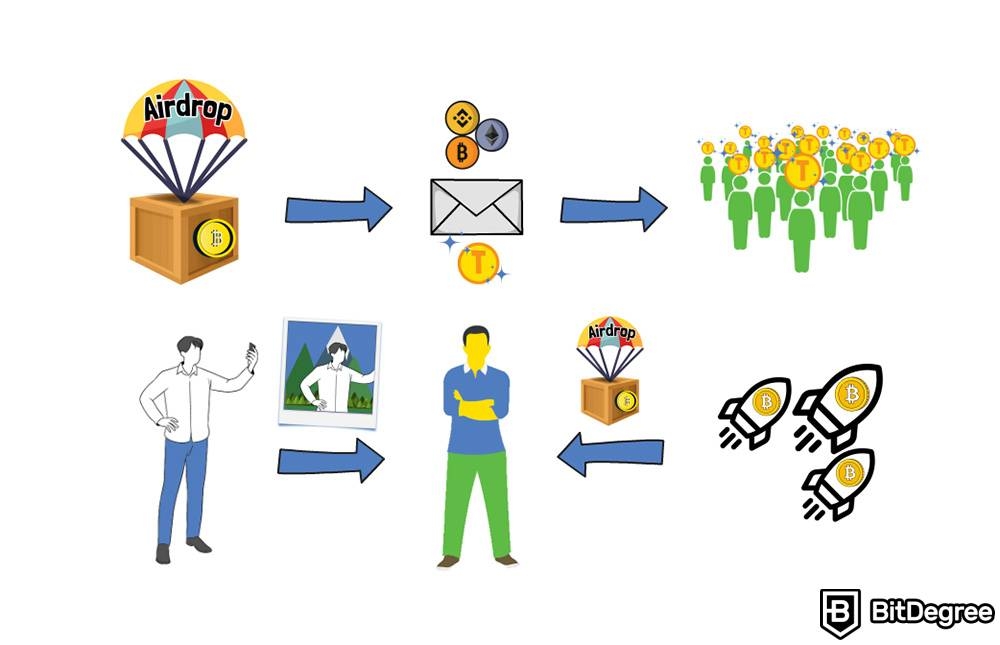
So, in order to receive these crypto airdrops, users must become eligible to claim them. This requires taking certain actions that, in turn, help generate interest and awareness about the project.
Here, consider this simple analogy to understand how crypto airdrops work. Your friend is moving out this weekend. You realize that it’s a draining process, and that extra hands would never hurt in a situation like this. You offer to give them a ride, help them move their stuff from their old place into the new one. You help them now, so eventually, when they’re all set up in their new apartment, they invite you for dinner. You helped them in an early stage of their life or a project, so now, once they’ve gained speed, they reward you.
You could put it this way - the invitation for dinner was “the airdrop”. Only selected and eligible recipients received it. Now, imagine this on a larger scale. People who helped test a new project, reported bugs, tried out new services (while the project was in its beginning phases), receive airdrops as a reward for their efforts, and as a point that it pays for being loyal to a particular company, brand, or blockchain.
Airdrops are more than just a reward for user loyalty, though. They’re also a clever way of conducting marketing. You see, “people claiming airdrops” translates to ”people getting free money”. It makes the word spread around, people begin to talk about it, everyone wants to be among those who can receive an airdrop.

Naturally, it can catapult the project behind the airdrop into the spotlight. This is publicity, people get to know, recognize, and remember the company’s name. That’s known as “the network effect”.
A very down-to-earth example could be this. John wants to go out and get himself a coffee. One coffee shop offers a deal: “If you buy coffee from us 4 times in a row, you’ll get the 5th one for free”. John chooses this place, being sure that he’ll return there and claim his free coffee eventually. He recommends this to his friends. The free coffee, which plays the role of the reward, is received, and the word is out there.
Making Money With Crypto Airdrops
Okay, that’s the theory. Let’s move on to the practice - it’s the most exciting part, since there are plenty of stories of how successful airdrop campaigns really ended up in companies boosting their brand awareness, and users boosting the contents of their wallets.
So, people make money with airdrops. But it all begins with receiving free tokens (or coins). The project may eventually take off, its value would increase, and thus, the value of the token would grow, as well.
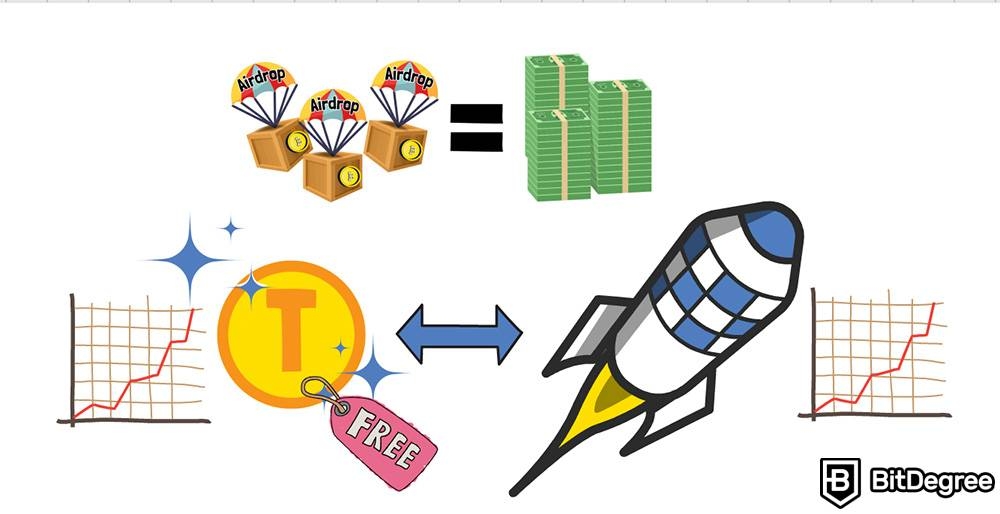
For fast money, recipients simply go to crypto exchanges and sell or trade the tokens, and end up pocketing the profits. It’s like selling a valuable Christmas gift that you received. Except there’s no guilt involved.
While there are some recent successful examples, let’s take a look at where it all began. Crypto airdrops became a thing in 2014. Out of all places, it actually began in Iceland.
The first crypto airdrop was organized by Auroracoin. The idea behind Auroracoin was to create an asset that would also be the national digital currency of Iceland. It was launched in February 2014, and airdropping free Auroracoins to citizens of the country was the plan of how to popularize it. 50% of the total Auroracoin supply was intended to be distributed to the country’s residents.
So, that’s literally free money. Sounds a bit too good to be true. And, well, unfortunately, it was.
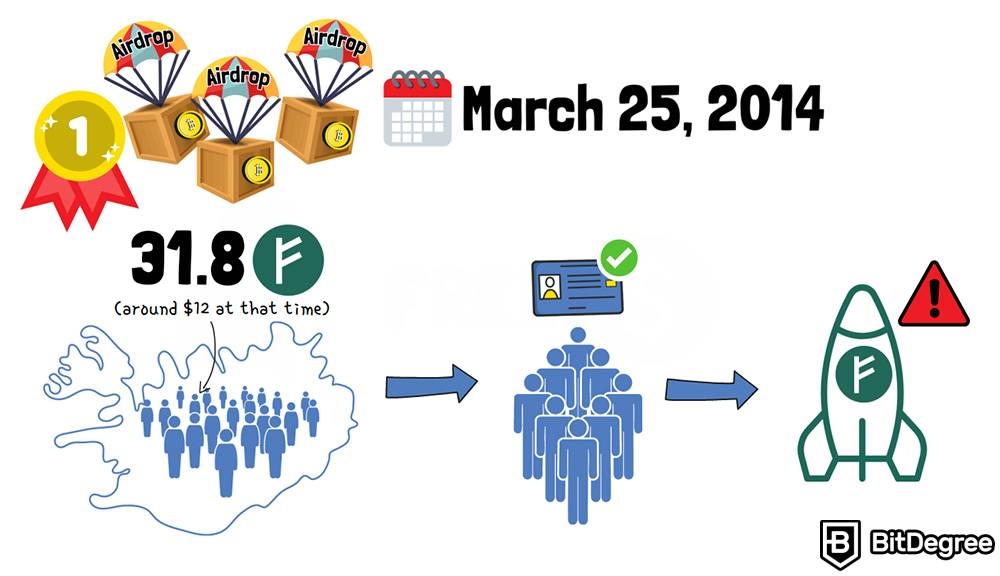
The airdrop took place on March 25, 2014. Every Icelandic citizen was eligible to receive 31.8 Auroracoins (around $12 at that time). In order to claim the airdrop, people had to submit their identification numbers. That’s it. Yet… it was too much for the project to take off.
The Auroracoin price dropped pretty quickly. This reduced people’s interest in the coin, and the project overall. This, in turn, led to Auroracoin’s eventual demise.
Many lessons were learned, however. The buzz was generated, the interest was raised, the whole thing was widely covered by the media. Private companies kept their eyes peeled, and took notes.
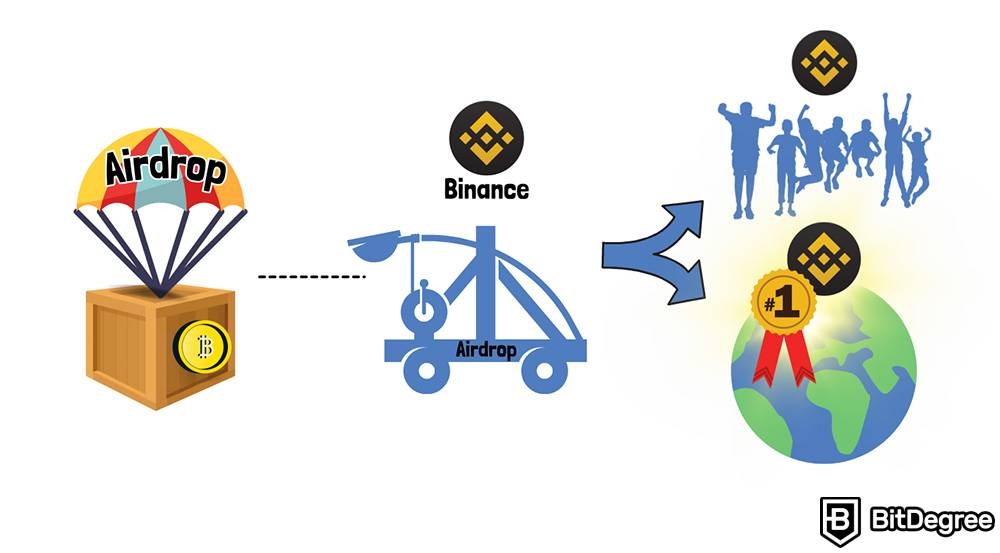
In 2017 Binance, a then newly-established centralized crypto exchange, decided to give this strategy a try. Binance distributed 500 BNB tokens to anyone who simply signed up for the airdrop.
Here’s the math behind it. The BNB token was worth around $0.10 at that time. So, everyone received around $50 worth of crypto. On the 5th of April, 2021, BNB was worth $676. So, those who held on to their 500 BNB tokens, were able to sell them for over $330,000. This pretty much illustrates why airdrops are so beloved among the community.
Not even mentioning the fact that, thanks to innovative marketing approaches like this, Binance was able to catapult itself into the eye of the crypto public, and cemented itself as the leading crypto exchange in the world.
By the way, if you feel like updating your knowledge about centralized exchanges, and how they work, be sure to check out this section that covers the topic extensively!
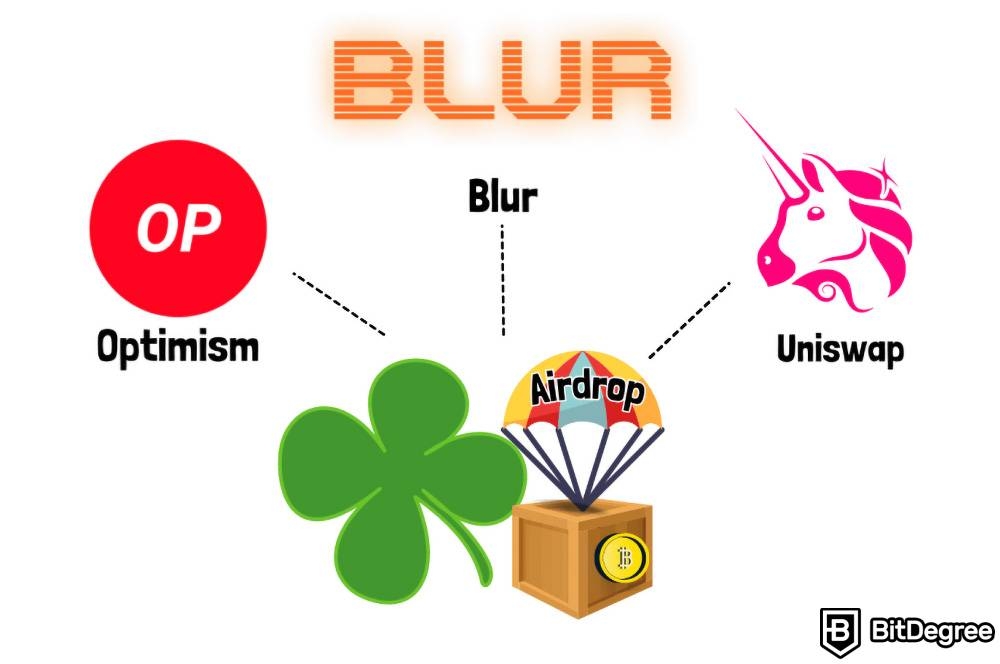
After such success stories, airdrops got more and more popular. Names such as Optimism, Blur, and Uniswap tried their luck with airdrops. And, they were successful. But there are always two sides to a coin.
As usual, when something gets popular because various opportunists begin jumping aboard the hype train, malicious people tend to blend in, as well.
Therefore, it’s not surprising that many people started reporting negative experiences after trying to receive an airdrop. Particular risks became associated with airdrops, especially the ones organized by obscure projects.
For example, some airdrops may require you to share your personal or wallet information with unknown sources. This could expose you to phishing attacks, identity theft, or other forms of hacks. It’s vital to be 100% sure about how valid a particular airdrop is.
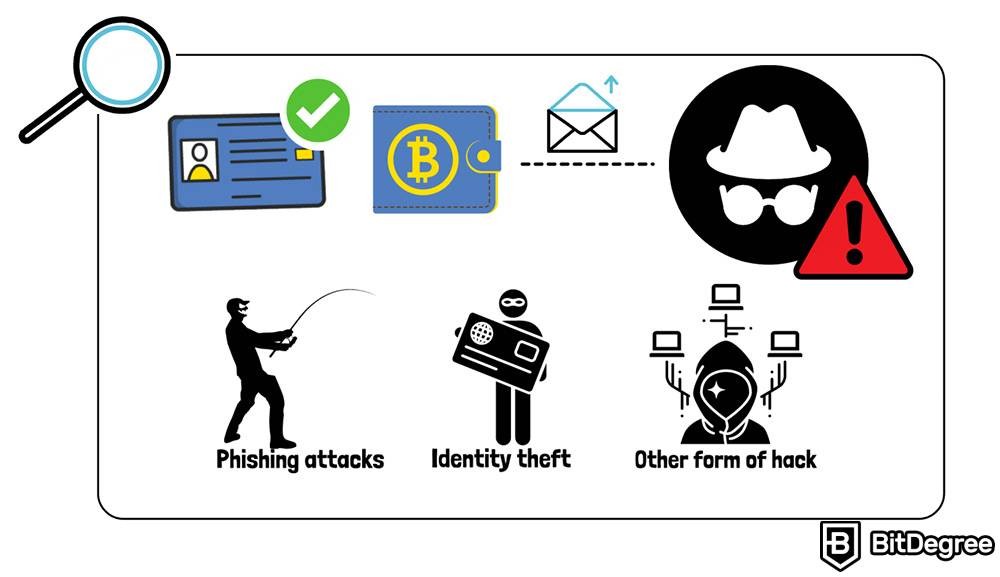
Another risk is that some airdrops may be part of “pump-and-dump” schemes, where the token price is artificially inflated, and then dumped by the creators or early investors.
Or, in other cases, disappointment can arise from receiving only the so-called “dust” of an airdrop. This happens when the team behind the project launches their product, or a coin, and its value plummets instantly. In this case, the value of the airdrop falls dramatically, as well, and users end up receiving a sad-looking addition to their wallet.
How to Get an Airdrop?
Nevertheless, all of that doesn't deny the fact that airdrops can be a successful and profitable strategy for both: the company, and the user.
Therefore, choosing the right project, qualifying as eligible for their airdrops, and simply being prepared is the key to being among the first ones to receive the most valuable airdrops. But the question arises: “how do you get an airdrop?”
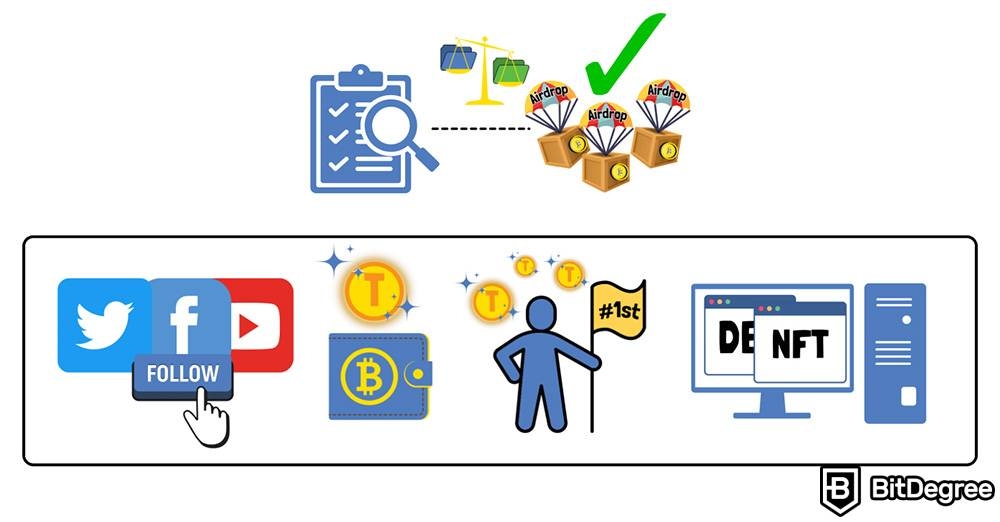
The simple answer is that the criteria for being eligible for an airdrop can vary greatly from project to project. It can range from simply following a project's social media accounts, holding a specific token, to being an early adopter and regularly using the platform, such as a DEX, or a particular NFT marketplace.
The key is to pay attention to the specific requirements of each project, as they can change over time. It's important to do your own research and understand the risks before participating in an airdrop. Keeping all of this in mind will greatly reduce the chances of participating in fake, scammy projects and wasting your time.
Wrapping Up
To sum up, I’ve answered the questions of “what is an airdrop?”, “what’s the crypto airdrop meaning?”, and “how can people potentially make money thanks to crypto airdrops?”. Similar to many good things in life, crypto airdrops can be exciting and rewarding, but they also come with some pitfalls.
Nevertheless, strategic companies will continue increasing their brand awareness, and expanding their communities thanks to well-organized airdrops. Same goes for users, who, while remaining cautious and calculating, will avoid scams and poorly-prepared airdrops.
And that brings us to the point where it’s time to call it a wrap! I hope you learned a thing or few, and from now on, the question “what is an airdrop?” will not bother you anymore.










